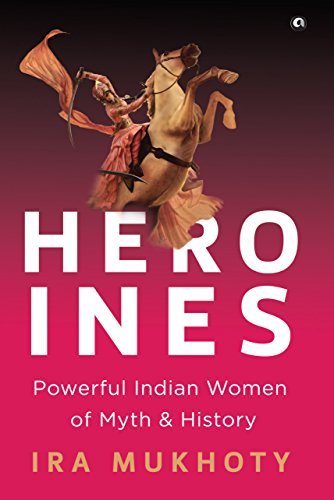What do you think?
Rate this book


238 pages, Kindle Edition
Published January 3, 2017
To be able to convey a sense of the antiquity of India, this book covers the lives of eight women, real or imagined, across three thousand years of India’s stories. There is a Mughal princess, a Turkish Mamluk warrior, and a Brahmin widow. There is a courtesan, a princess of Chittor and a begum who was of part-African descent. Yet in time, all these differences are scuffed or overlooked and the women become representative of a universal, north-Indian ideal of beauty—fair skinned and buxom. The fire goes out of their eyes as does the strength in their limbs which once wielded talwars and scimitars. More corrupting still is the effacing of their personalities, the sublimation of their faults and their unacceptable transgressions.In other words, these women have been sanitised to fit a single mould, that of the virtuous Bharatiya Nari. Desexed, depersonalised and disempowered, they have become like "Raja Ravi Varma’s kitsch poster art" (I would also add Amar Chitra Katha). Ira Mukhoty digs deep into their histories, separates wheat from the chaff, and presents before us three-dimensional women of flesh and blood: not as "pure" as touted, more vulnerable, and in some cases, not very likeable - but better than the pastiches we knew from fireside tales.
In the heroic context, it may not appear to be very momentous to leave one‚Äôs home and the security of society in search of a personal goal, but even today, women in India face society‚Äôs opprobrium or worse for being seen to ‚Äòtransgress‚Ä� or even when they are just going about their lives. Women are mutilated and murdered on cold December evenings in Delhi outside movie theatres, and they are raped on balmy Mumbai afternoons in abandoned textile mills. They are killed, and brutalized and tortured in Haryana, Punjab, Rajasthan, Uttar Pradesh and beyond, for leaving their homes with men of the wrong religion, or caste or colour. This is why the obduracy of that first step, which took these eight women outside the safety of their known universe, was truly remarkable, because every woman in India understands why such a decision was momentous.This is what binds these heroines together, despite their varied natures and fortunes - their courage to step outside invisible societal boundaries.
In the twenty-first century reality for Indian women, it is more important than ever to remember the stories of our heroic women. To remember that women having been standing up against injustice and oppression for thousands of years, with courage and grace. For the countless daughters of India who would be astronomers and scientists, artists and entrepreneurs, it is essential that there are heroic role models who are human in their fallibility and sublime in their ambition. Real women, with weaknesses to overcome, not impossible goddesses complacent in their divine superiority.Yes indeed. In contemporary India, where women entering temples are assaulted with pepper sprays on account of them being "impure", and every day the country wakes up to the stories of girls raped, tortured and murdered, we do need such heroines - if only to remind ourselves that the "Lakshmana Rekhas" are valid only so long as women honour them.